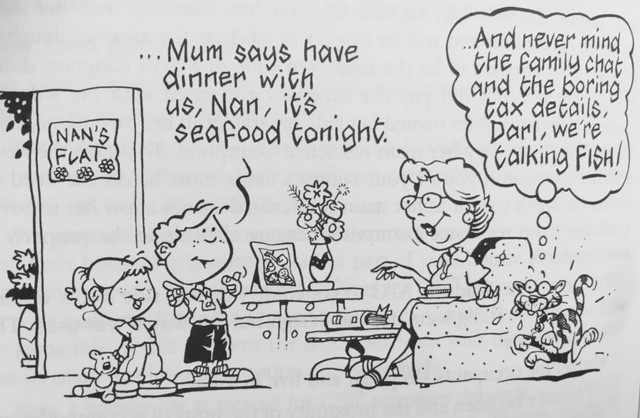
Granny Flat Rights
Centrelink offer some excellent pension concessions for parents to build a granny flat in their child’s back yard or modify the house etc. With raising awareness of elder abuse Centrelink also strongly encourage parents to obtain a right of occupancy over their child’s house. This would take the form of a life time right to reside for ATO purposes.
While Centrelink is busy protecting its customers, another government department, the ATO, is having a field day taxing their children on the value of this right with no main residence exemption and no 50% CGT discount. The ATO is taxing, at the child’s full marginal tax rate the transfer of assets between a parent and child. People used to complain about the death tax now the ATO can’t even wait for the parent to die! Further, even if the parent gives the child nothing in return for the life time right, the ATO will still deem an amount changed hands and tax the child on something that just doesn’t exist.
In November 2018 the government finally announce that they would review the law. This law has been around for 34 years now! The review board is not due to even report until much later this year and who knows when there will actually be any change in the legislation.
There is a simple way around the problem.
The child does not give the parent any right to occupy, just take their money and say trust me. Which brings us back to the problem of elder abuse, but it is not as if the average family can afford anything else. But with Centrelink trying to do the right thing and push for life time rights to occupy it will mean that only ill informed, well-meaning children will be caught in this tax trap.
This is how it works.
The child gives their parent a life time right to reside in their home without actually selling them part of the home. This would cover a granny flat situation where the parent has a legally enforceable life time right to live there but is not an owner of the property. In granting this life time right to reside, they are creating an asset (the right) and transferring it to their parent. This is CGT event D1. The asset comes into effect at the time of creating the occupancy right so there can be no 50% CGT discount as that requires the asset to be held for over 12 months before it is sold. Because the transaction is not arms-length the parent is deemed to have paid market value. So here is the kicker, this even applies if the child does it all for free but still gives the parent a legal right for peace of mind. The market value is still considered to have changed hands. This would be similar to what it would cost the parent to obtain this right somewhere else. Possibly a discounted cash flow of the rent that would need to be paid over their life expectancy.
This would still be the case even if the parent used their money to actually build a granny flat in the back yard. That granny flat is a fixture to the land so is owned by the child. Not a problem though until the parent wants a legally binding right to occupy that granny flat. The market value of this benefit is still CGT event D1 and the cost of the building the granny flat does not contribute to the cost base. Just like the example above there is no cost base other than the legal fees to draw up the agreement.
Note a cost base is the amount you can deduct from the sale proceeds to calculate the actual capital gain on the transaction. The cost of building the granny flat will increase the cost base for the child’s house but not for the life time right.
A compromise may be able to be reached by utilising a relocatable home or tiny house on wheels. The parent could purchase that and still own it because it would be an asset separate from the land. While the child still would not be able to give them any legal right to park it in the back yard without triggering CGT, at least the parent has some sense of security knowing that they can relocate the home if necessary. This is an excellent idea if the child’s home is mortgaged as an occupancy right is not going to stop the bank repossessing.
Another option is the child gives the parent part ownership as security by actually selling them part of their house. If the child has not used the house to produce income in the past, the transaction would be covered by the child’s main residence exemption so no capital gains tax. The title could be on the basis of joint tenancy so that when the parent died the house would just revert to the child. As long as the parent’s share of the house was covered by the parent’s main residence exemption for CGT purposes, the whole time, then when the parent dies, there would be no tax downside for the child. They would just acquire that portion of the house with a cost base the same as the “market value” they transferred it to the parent, but with the period the parent was there being exempt anyway. Eventually when the child sells the house it would just be like the transfer to the parent never happened.
The next issue
If the title is in the child’s name only, is whether there are two dwellings on the land. You can only cover one dwelling with your main residence exemption. And it is only the owner of the property who can give their main residence exemption to the dwelling. The only way the granny flat and the main house can be treated as one dwelling is if they are used together as the family home. The ATO takes a rather strict view on this in TD 1999/69. Even if you are all related, unless you are in and out of each other’s home frequently and eat together more than once a week. The granny flat will be considered a separate dwelling. This means that only part of the property will be covered by the child’s main residence exemption. The parent cannot cover the other part with theirs because their name is not on the title.
If you would like to know more about Granny Flats in general please read https://www.bantacs.com.au/booklets/Granny_flat_checklist.pdf
 Julia's Blog
Julia's Blog